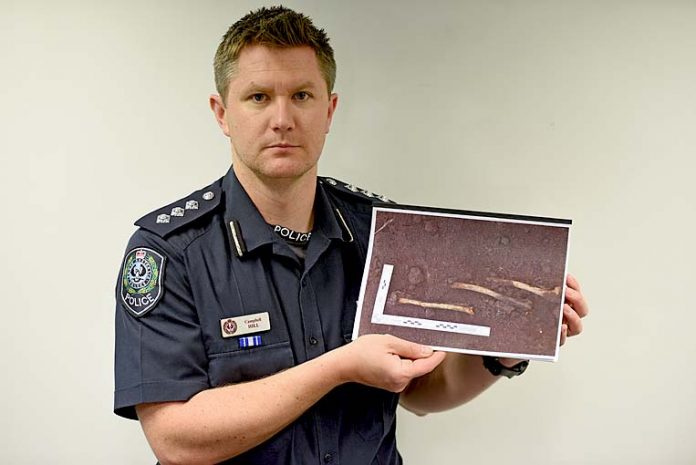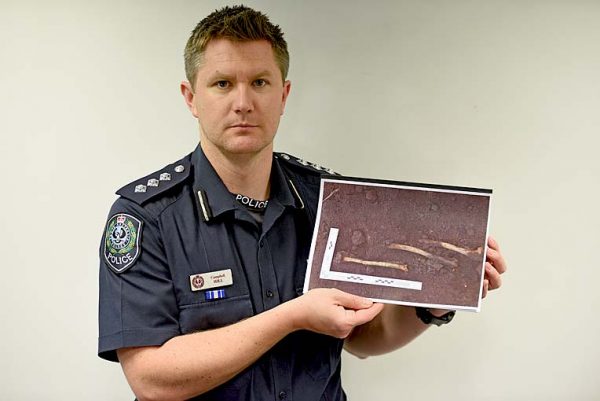

BONES unearthed during construction at the former Target Mount Gambier site have undergone forensic examination, revealing the remains were that of a century-old sheep.
Workers at the construction site made the shock discovery on Friday, immediately contacting police after holding concerns they may be human remains.
While further examination has identified the remains, Limestone Coast Police officer in charge Superintendent Phil Hoff said the discovery of bones was not an uncommon occurrence.
“Once every one or two months we will get a call-out from someone who has found some bones but it is not often they are human bones,” Supt Hoff said.
“We still treat every case the same and make sure we have them measured and forensically examined so we can make an accurate determination.”
The discovery at the central location last week created some interest with onlookers watching on as police and workers examined the area.
Limestone Coast Police operations manager Inspector Campbell Hill said it was not unusual for police to deploy several resources at an area where bones are found.
“We will usually throw a lot of resources at it really quickly in the very rare chance there is something sinister to it, but more often than not it is not the case,” he said.
“You can see in the images the bones are quite large, so it is certainly feasible and you would be forgiven for thinking it is a human to begin with.”
He said a similar discovery was recently made in sand dunes near Kingston while police attended another incident.
“We have had our crime scene examiners looking at a completely different matter and have someone walk up with a bone they found in the sand dunes,” Insp Hill said.
“But within an hour we can have photographs sent to forensic experts in Adelaide and get advice from them and we were able to ascertain on that occasion that it was a kangaroo bone.”
While the investigation is now complete, Insp Hill admitted it was an interesting place to locate the bones.
“We actually found out the concrete at that site was laid down in the 1920s, so we were able to date the bones to around 100-years-old,” he said.
“It’s really quite fascinating and interesting to see how the bones can maintain themselves for that long.”





